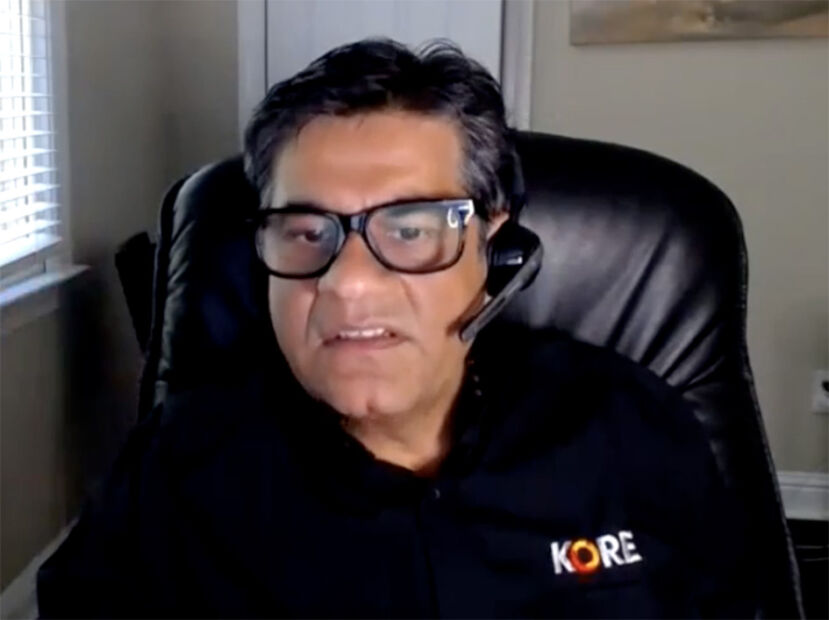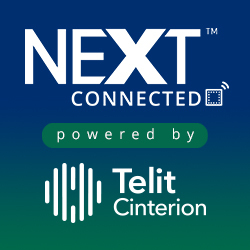Is this really the decade of the IoT?
- September 24, 2022
- Steve Rogerson

Steve Rogerson reflects on KORE chief technology officer Tushar Sachdev’s keynote address at the recent IMC IoT Days Fall online conference.
The hype cycle is behind us, adoption is increasing, and 2020 to 2030 can really be called the decade of the IoT. That was the clear message from Tushar Sachdev, chief technology officer at KORE, during his keynote speech at last week’s IMC IoT Days Fall online conference.
That doesn’t mean all the problems are behind us, far from it. Deploying IoT is complex. You need partners. Managing it is complex. And scaling it to cover 200,000 devices? “That is when the entire game changes,” said Sachdev.
IoT adoption is also being held back by evolving technologies and standards, and expensive devices and modules.
However, the IoT is continuing to grow and Sachdev sees the market reaching many trillions of dollars by the 2030s, with something like two-thirds of the applications being in the B2B space. Specifically, he said there would be 1.9bn 5G subscriptions by 2024 and 25bn devices by 2025.
LoRa, he predicted, would lead in the non-cellular LPWAN market and account for a quarter of all connections by 2026. And eSIMs will triple their growth from 2020 to 2030.
“We are seeing demand coming from the market,” he said. “If you are building your use cases, you should be asking for eSIMs. We are seeing already that growth coming.”
Among the main technology areas, he highlighted artificial intelligence (AI) and machine learning covering everything from anomaly detection in behaviour to predictive maintenance. These, he said, are all about getting the right IoT data to make them real and both of these are seeing serious real use cases.
Automation is at the heart of what drives some IoT applications. Factory owners are asking if they can connect a legacy machine on the shopfloor and automate it. The medical world wants to collect patient data and automatically send out prescriptions.
For edge computing, he said there were two main trends. First, there are applications sitting on the cloud that are not moving anywhere. The edge will help you transmit your data to them much faster in a more nimble, cleaner way. Secondly, applications are being built with a completely new architecture so they can be deployed on the edge itself.
So let us dig a little bit more into industrial applications to see where the IoT is having an impact. We have all heard of Industry 4.0, but in reality not many if any are going to replace their entire production floor and say it is now going to be done by cheaper sensors and the IoT. But there are specific areas that can be attacked to get the adoption done.
“People want to monitor the factory and monitor the environment outside the factory,” said Sachdev. “These will be the early adopters.”
Then, he said, the production floor would steadily start to adopt some of the ways IoT could help. These include tracking critical assets in the factory or hospital. You can monitor the health of the asset and know where it is.
“The entire supply chain and logistics will adopt IoT significantly,” he said. “In agriculture, many of the giant companies have already turned to IoT at scale.”
But he said the biggest impact had been in connected health. People who used to come in each week to have their vitals checked after a clinical trial now have all this done remotely. Patient monitoring after surgery is all moving to the IoT.
“Connected health is big and happening,” he said.
The fleet and transportation industry was one the early adopters of IoT technology. This has now matured. An example is the use of video, very rare just a few years ago but now being deployed hugely both outside to monitor the traffic and provide information in case of accidents and inside the vehicle to see if the driver is distracted. Route optimisation is using IoT efficiently.
“It is really fascinating to see all across the board the maturity of the use cases,” said Sachdev.
All rosy? Not really, because there are still problems. Most projects start with a proof of concept and never get beyond that stage or are dropped soon after. Sometimes the business case just doesn’t fit. And when it comes to scaling the operation, then it simply might not work.
Now there are companies that can help, and not surprisingly Sachdev mentioned that KORE was one of them, but there are others.
“The industry has woken to some of these challenges and can help business models,” he said. “There are companies that can run all the background operations. You don’t need to do that yourself.”
He pointed to some quite depressing statistics. Sixty per cent of IoT initiatives stall at the proof-of-concept stage. Only 26% of companies that have an IoT initiative consider it a complete success And a third of all completed projects were not considered a success.
However, Sachdev said he was very optimistic that these statistics would improve significantly over the next few years. But the important point is that you do not need to this all by yourself. If this really is to be the decade of the IoT then partnerships are key to doing it successfully.





